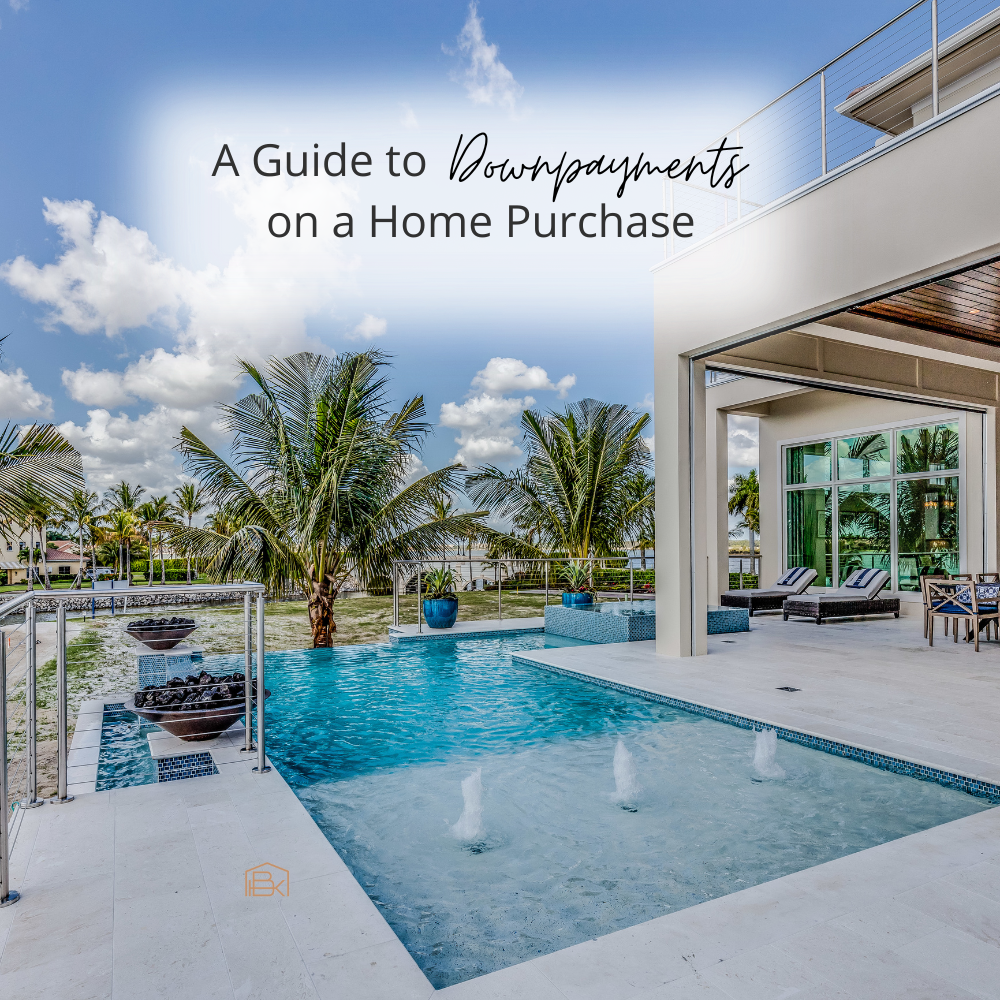
Downpayment for a Home: An Overview
A downpayment is a part of the home purchase price. The downpayment is paid at closing and not financed with the mortgage. The size of the downpayment required for a home purchase can vary depending on several factors. We will break down a few of these, including the type of mortgage, the value of the home, and the buyer’s credit score.
TYPES OF MORTGAGES AND REQUIRED DOWNPAYMENT FOR A HOME
Conventional Mortgages: Conventional mortgages typically require a downpayment of at least 5% of the purchase price. Some lenders may require a higher downpayment for borrowers with a lower credit score.
FHA Loans: The Federal Housing Administration (FHA) offers loans that only require a downpayment of 3.5% of the purchase price. However, borrowers who put less than 20% down pay mortgage insurance premiums that add to their monthly payments.
VA Loans: The U.S. Department of Veterans Affairs (VA) offers loans with no required downpayment for eligible veterans and their surviving spouses.
USDA Loans: The U.S. Department of Agriculture (USDA) offers loans with no required downpayment for eligible borrowers in rural areas.
FACTORS THAT CAN AFFECT THE REQUIRED DOWNPAYMENT
- Credit Score: Borrowers with higher credit scores may be able to get a lower downpayment requirement.
- Home Value: Higher-valued homes typically require a larger downpayment.
- Loan Type: Some loans, such as FHA loans, require a lower downpayment but also carry additional fees and insurance premiums.
BENEFITS OF MAKING A LARGER DOWNPAYMENT
- Lower Monthly Payments: Making a larger downpayment can reduce the size of the mortgage, resulting in lower monthly payments.
- Equity Build-Up: A larger downpayment means the borrower has more equity in the home, which can provide a financial cushion in case of a market downturn.
- Reduced Risk: Making a larger downpayment can reduce the risk of default, as the borrower has more skin in the game.
- Avoiding Private Mortgage Insurance: Borrowers who put down less than 20% are required to pay private mortgage insurance (PMI). Making a larger downpayment can help avoid the need for PMI.
SAVING FOR A DOWNPAYMENT
Saving for a downpayment on a home can be a long-term goal that requires discipline and planning. Some strategies for saving for a downpayment include:
- Creating a Budget: A budget can help prioritize expenses and allocate funds towards saving for a downpayment.
- Setting Savings Goals: Setting specific, measurable, and achievable savings goals can help keep the focus on the end goal of homeownership.
- Automating Savings: Automating savings through a direct deposit or recurring transfer can make it easier to save consistently for a downpayment.
- Seeking Financial Assistance: First-time homebuyers may be eligible for downpayment assistance programs offered by local or state governments. Some non-profit organizations even have a few!
In conclusion, the size of the downpayment required for a home purchase can vary based on several factors. These include the type of mortgage, the value of the home, and the buyer’s credit score. Making a larger downpayment can provide several benefits. Some of the benefits are lower monthly payments, equity build-up, reduced risk, and avoiding private mortgage insurance. Saving for a downpayment can be a long-term goal that requires discipline and planning. There may be financial assistance programs available for first-time homebuyers.

I am a licensed Realtor in Florida as well as a Loan Originator. That means I have an in-depth understanding of real estate transactions from all sides. I am here to help you evaluate what options you have. I am here to help you! Follow the link above to start the pre-approval process and finding your dream home!

leave a comment
share
share
share
share
share